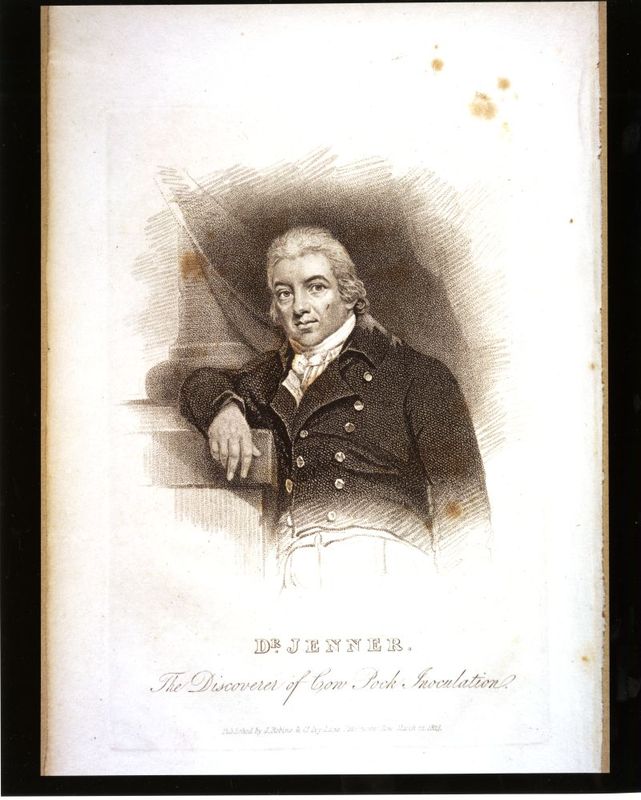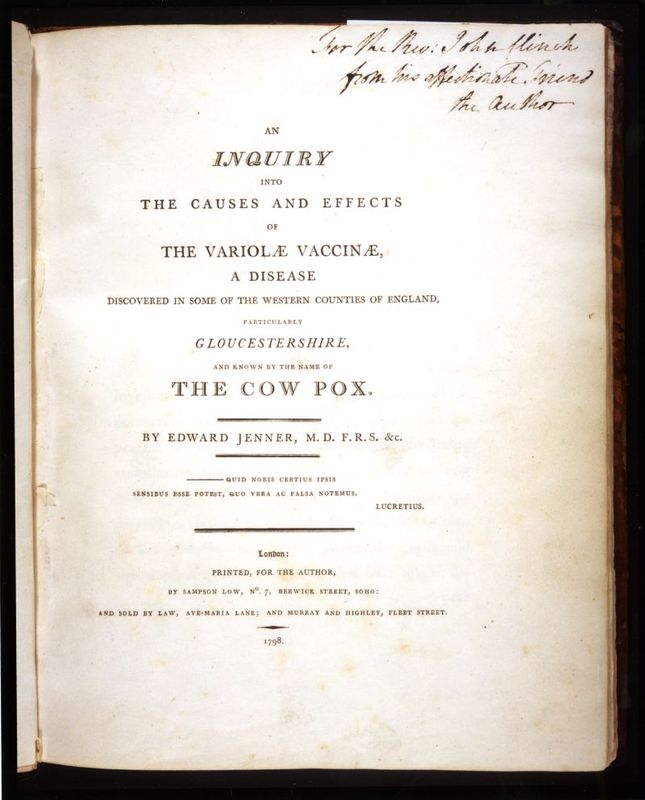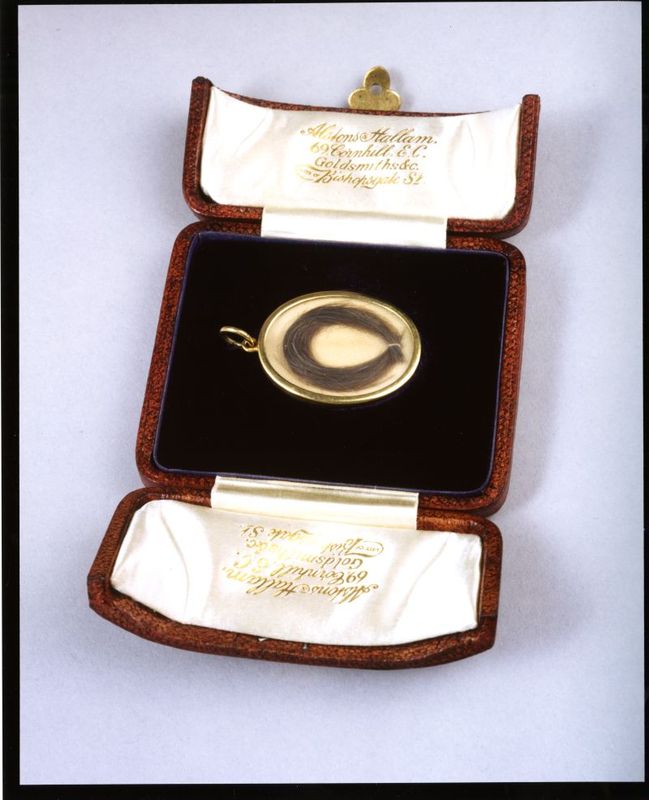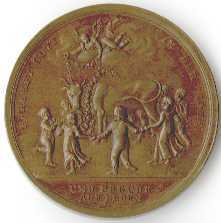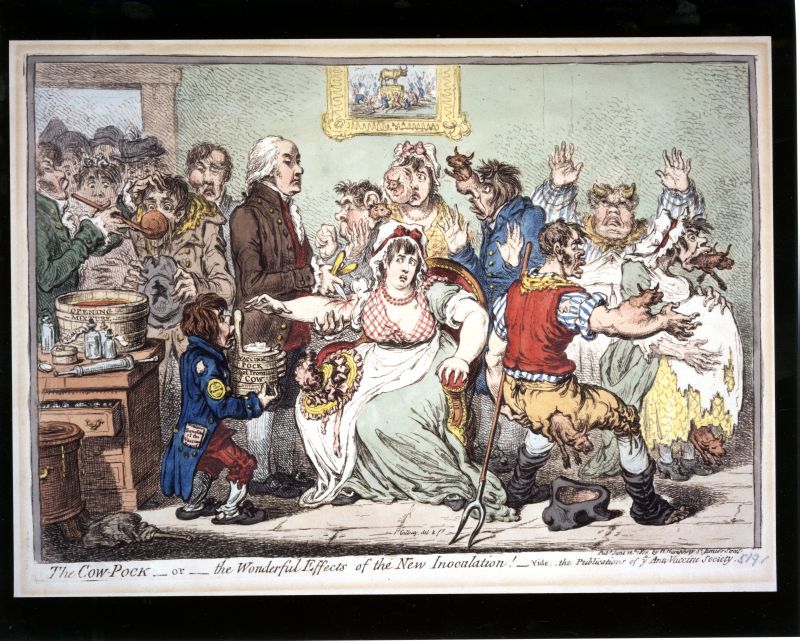Edward Jenner
In the late eighteenth century, it was common medical practice to inoculate patients against smallpox by using matter from actual smallpox pustules. A moderate case of the disease served to immunize the patient against a more virulent outbreak. But the risks associated with this procedure were great: the disease contracted could sometimes be severe, and smallpox could then be further spread among the population. English physician Edward Jenner (1749-1823) discovered that individuals who had contracted cowpox, a mild disease often spread to human beings by contact with the teats and udders of cows, were resistant to smallpox infection, and he came to believe that cowpox matter could be transmitted from one person to another, conferring immunity to smallpox.
On May 14, 1796, using cowpox matter from the hand of a milkmaid, Sarah Nelmes, Edward Jenner inoculated an eight-year-old boy, James Phipps. The boy contracted cowpox and soon recovered. On July 1, Phipps was then inoculated with smallpox matter. When the boy failed to contract smallpox, Jenner believed he had demonstrated a safe and effective method—vaccination, derived from vacca, the Latin word for cow—to immunize humanity against the terrors of smallpox and, ultimately, to eradicate the disease entirely. Edward Jenner soon published his findings as An Inquiry into the Causes and Effects of the Variolæ Vaccinæ (1798). He also found a means to preserve dried vaccine matter on quills and in glass for several months at a time and was then able to send samples to other physicians—among them Benjamin Waterhouse.
The first edition of Edward Jenner's publication contains his evidence that inoculation with cowpox vaccine matter could be a preventive against smallpox. Pages 32-35 concern Case XVII, an eight-year-old named James Phipps, who was inoculated with cowpox matter taken from Sarah Nelmes, a dairymaid, on May 14, 1796. Subsequent inoculation with smallpox demonstrated the boy's immunity to the disease. The case was Jenner's first vaccination of a human patient.
The title-page of this copy of An Inquiry bears a presentation inscription by Edward Jenner to the Reverend John Clinch.
The rest of his career centered around vaccination research. He said, "I shall myself continue to prosecute this inquiry, encouraged by the pleasing hope of its becoming essentially beneficial to mankind." He promoted vaccination, published a number of pamphlets on the subject, and kept physicians supplied with usable cowpox matter. Jenner received grants from Parliament of £30,000 for his research, was awarded honorary degrees from both Oxford University and Harvard University, and saw a national vaccination program established in England in 1808.
This anonymous article, appearing in December 1798, is the first American publication to discuss the work of Edward Jenner.
A number of medals were struck to commemorate Edward Jenner's research and the centennial of the first vaccinations. While most depict the physician himself, the bronze example here shows an angel draping a garland around the neck of a cow surrounded by dancing children. The medal was crafted by Friedrich Wilhelm Loos.

